Candidates can download NCERT Exemplar Class 8 Maths Unit 5 from this page. The exemplar has been provided by the National Council of Educational Research & Training (NCERT) and the candidates can check it from below for free of cost. It contains objective, very short answer type, short answer type, and long answer type questions. Along with it, the answer for each question has also been provided. From the NCERT Exemplar Class 8 Maths Unit 5, candidates can understand the level and type of questions that are asked in the exam.
NCERT Exemplar Class 8 Maths Unit 5 Understanding Quadrilaterals and Practical Geometry
NCERT Class 8 Maths Unit 5 is for Understanding Quadrilaterals and Practical Geometry. The type of questions that will be asked from NCERT Class 8 Maths Unit 5 are displayed in the below provided NCERT Exemplar Class 8 Maths Unit 5. With the help of it, candidates can prepare well for the examination.
Also Check: NCERT Solutions for Class 8 Maths
Main Concepts and Results
- A simple closed curve made up of only line segments is called a polygon.
- A diagonal of a polygon is a line segment connecting two nonconsecutive vertices.
- A convex polygon is a polygon in which no portion of its any diagonal is in its exterior
- A regular polygon is a polygon whose all sides are equal and also all angles are equal.
- The sum of interior angles of a polygon of n sides is (n-2) straight angles
- The sum of interior angles of a quadrilateral is 360°.
- The sum of exterior angles, taken in an order, of a polygon is 360°.
- Trapezium is a quadrilateral in which a pair of opposite sides is parallel.
- Kite is a quadrilateral which has two pairs of equal consecutive sides
- A parallelogram is a quadrilateral in which each pair of opposite sides is parallel.
- A rhombus is a parallelogram in which adjacent sides are equal
- A rectangle is a parallelogram in which one angle is of 90°
- A square is a parallelogram in which adjacent sides are equal and one angle is of 90°
- In a parallelogram, opposite sides are equal, opposite angles are equal and diagonals bisect each other.
- In a rhombus diagonals intersect at right angles.
- In a rectangle diagonals are equal.
- Five measurements can determine a quadrilateral uniquely.
- A quadrilateral can be constructed uniquely if the lengths of its four sides and a diagonal are given.
- A quadrilateral can be constructed uniquely if the lengths of its three sides and two diagonals are given.
- A quadrilateral can be constructed uniquely if its two adjacent sides and three angles are given.
- A quadrilateral can be constructed uniquely if its three sides and two included angles are given
Solved Examples





In examples 14 to 23, state whether the statements are true (T) or
false (F).
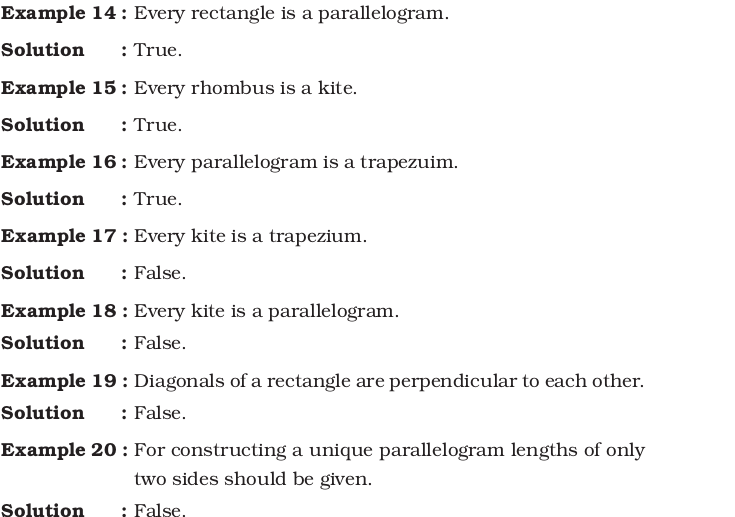














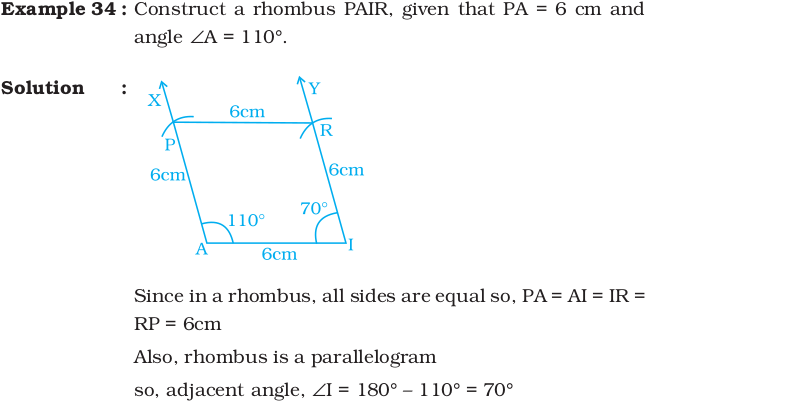




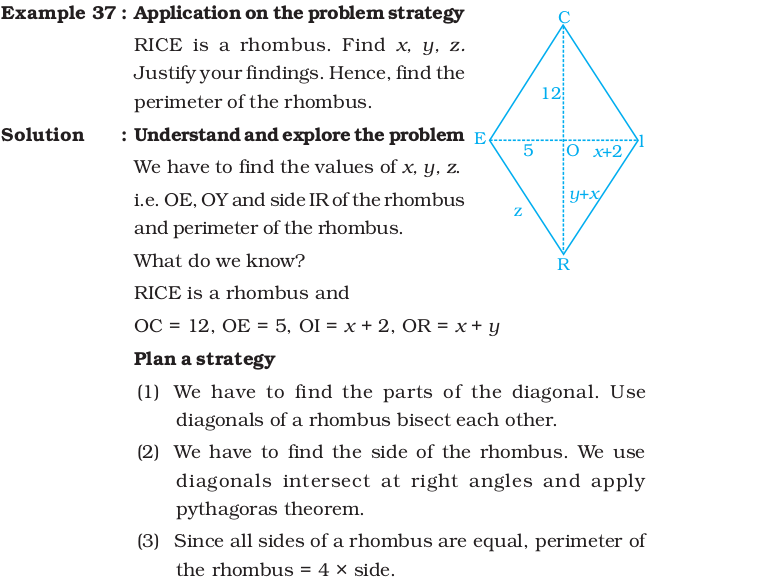

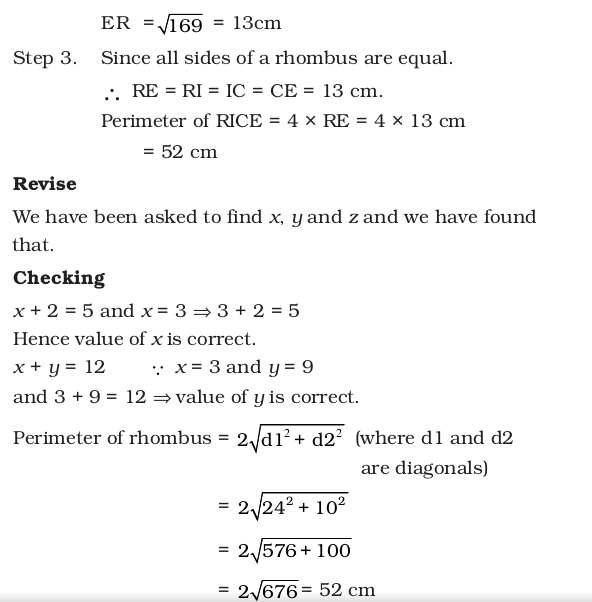
Think and Discuss
- If RICE is a parallelogram, not a rhombus can you find x, y and z ?
- If RICE is a rhombus with EC = 20 cm and OC = 12 cm, can you find x, y, z ?



Think and Discuss
- Can you draw this rhombus by using some other property?
- Can you draw a parallelogram with given measurement?
- How will you construct this rhombus if instead of side 4.5 cm diagonal 4.5 cm is given?
Multiple Choice Questions

Fill in the Blanks Type Questions
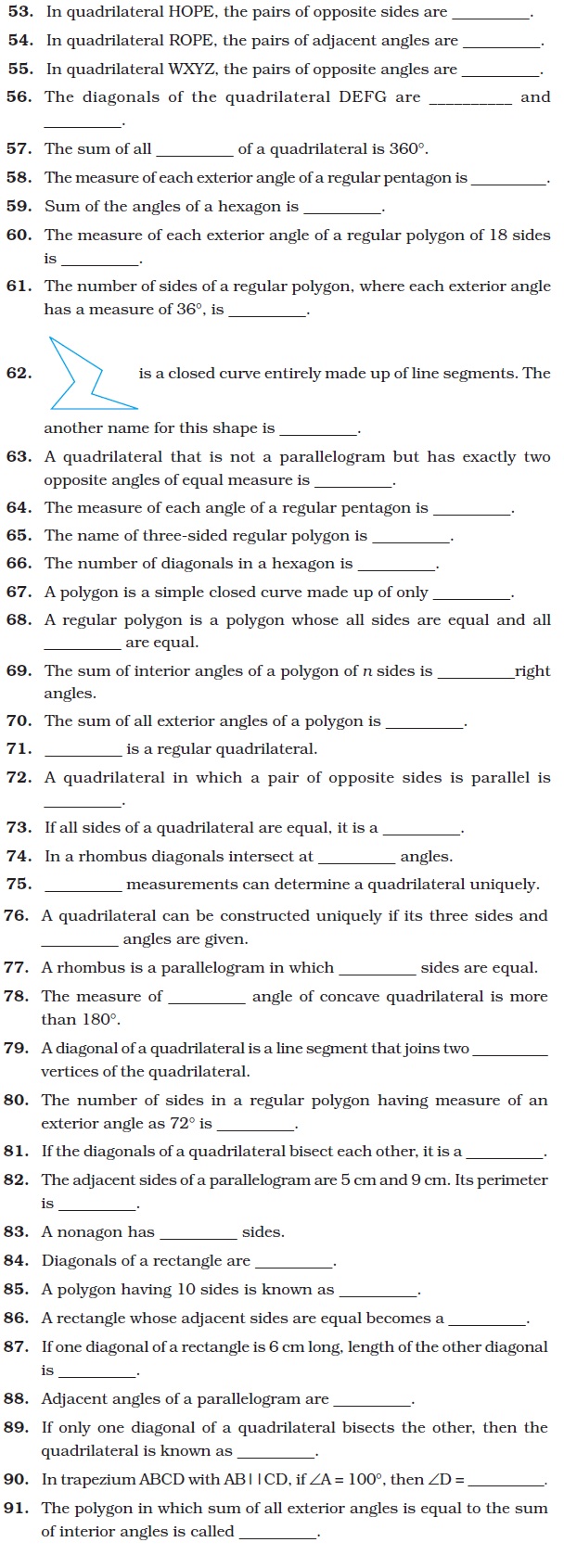
True False Type Questions
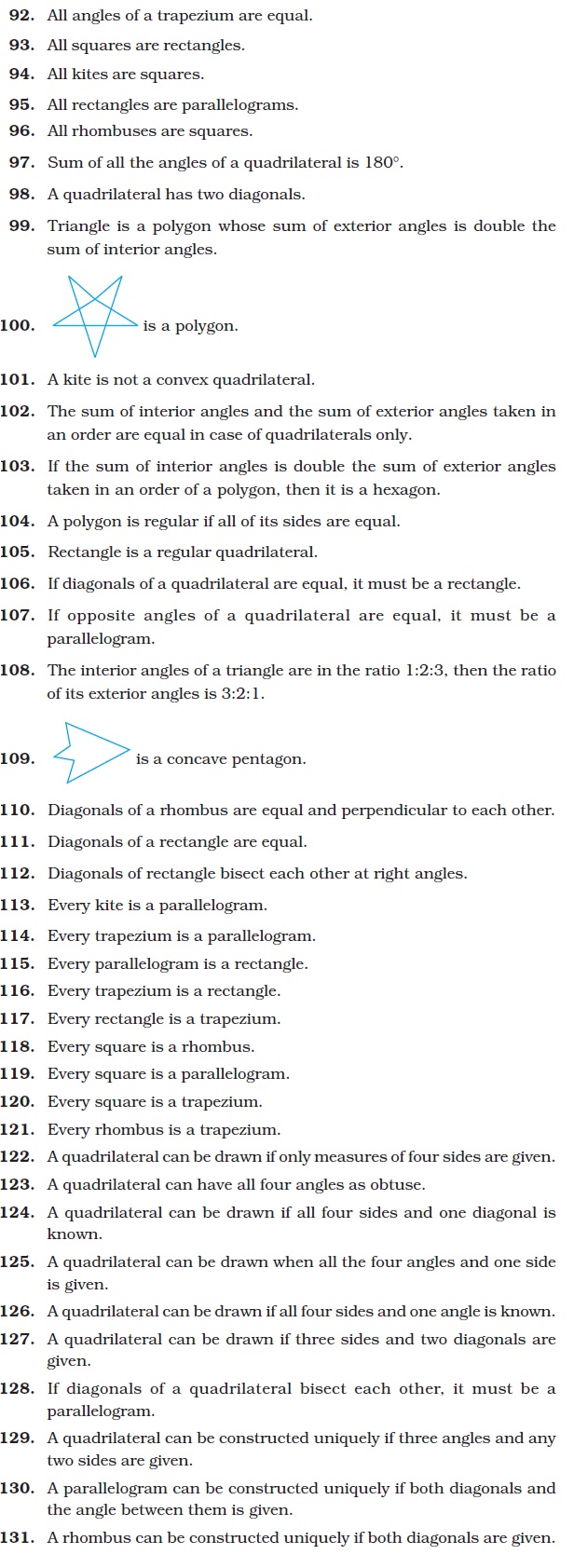
Short Answer Type Questions

Applications, Games and Puzzles

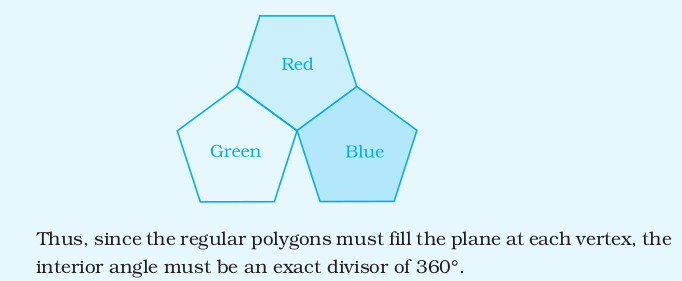

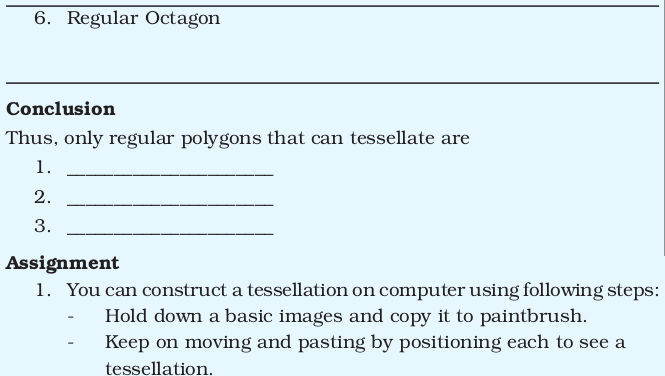
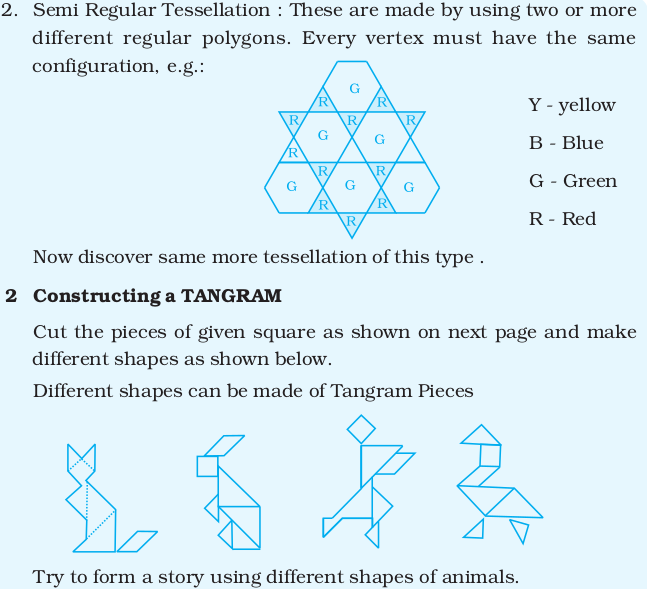


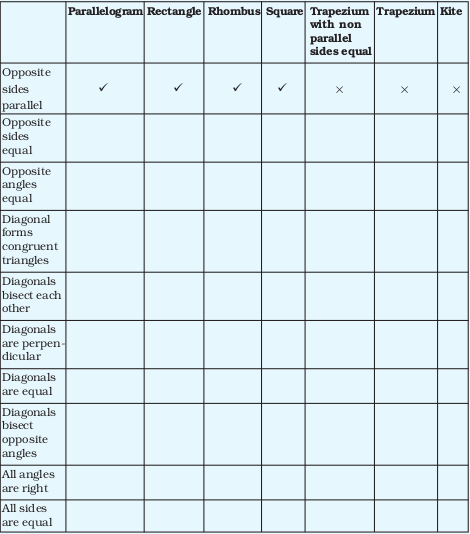




Click here to download the NCERT Exemplar Class 8 Maths Unit 5 Understanding Quadrilaterals and Practical Geometry.
Answers to Multiple Choice Questions


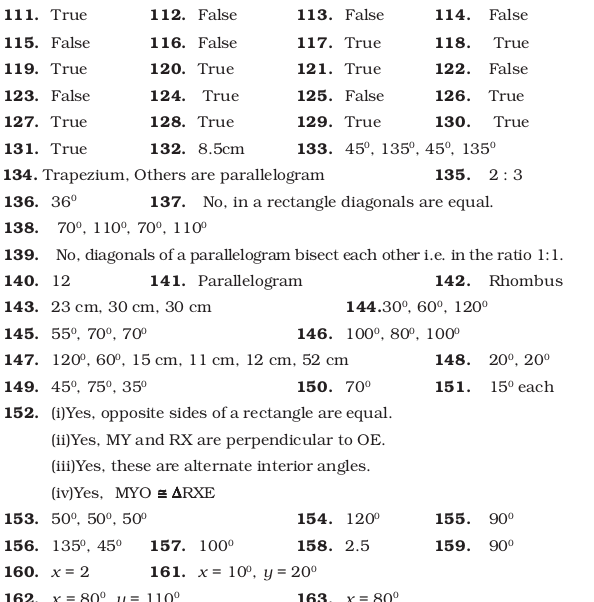









ABCD is the required rectangle.
ABCD is the required rectangle.

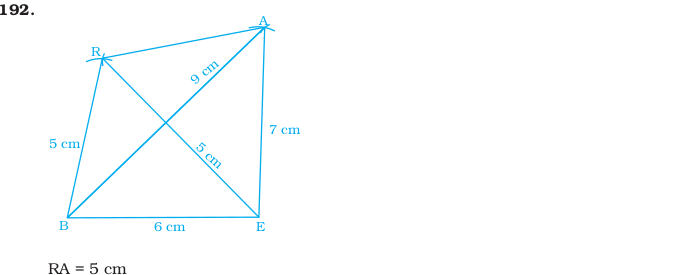



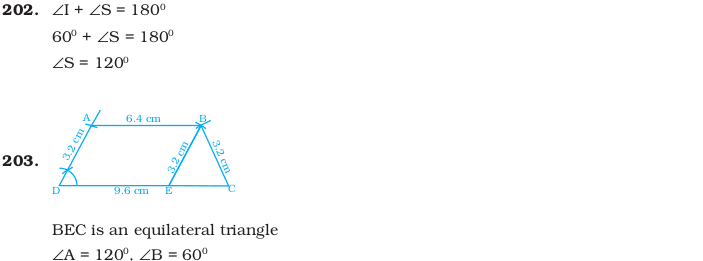
Applications, Games and Puzzles


To get study material, exam alerts and news, join our Whatsapp Channel.

